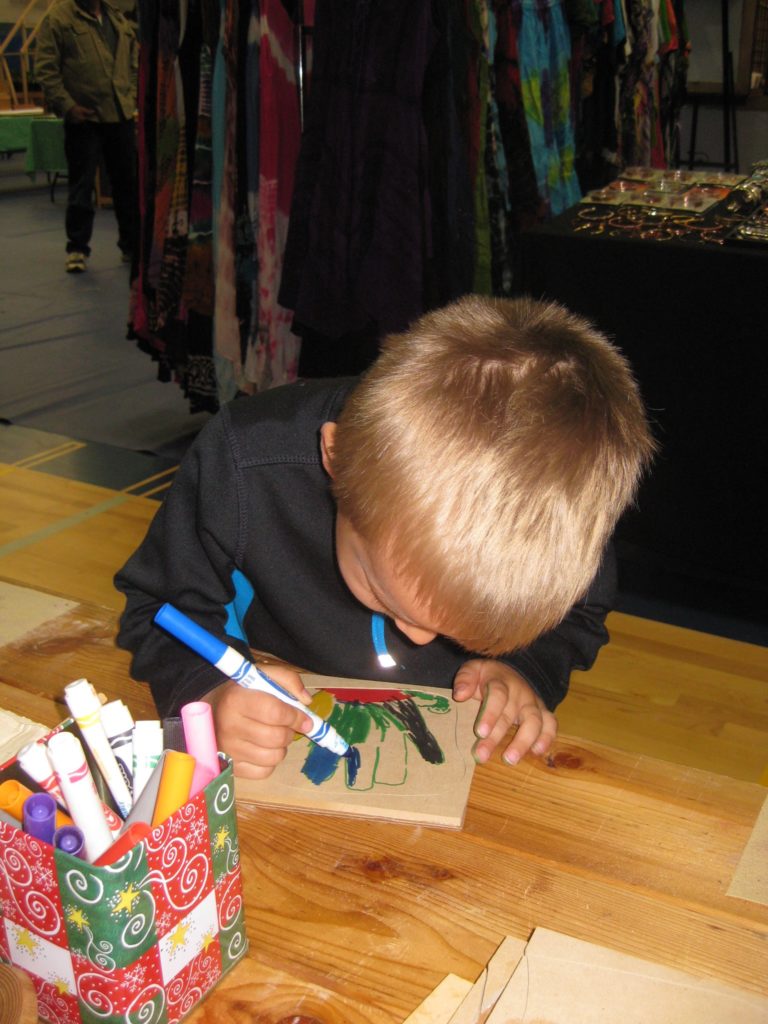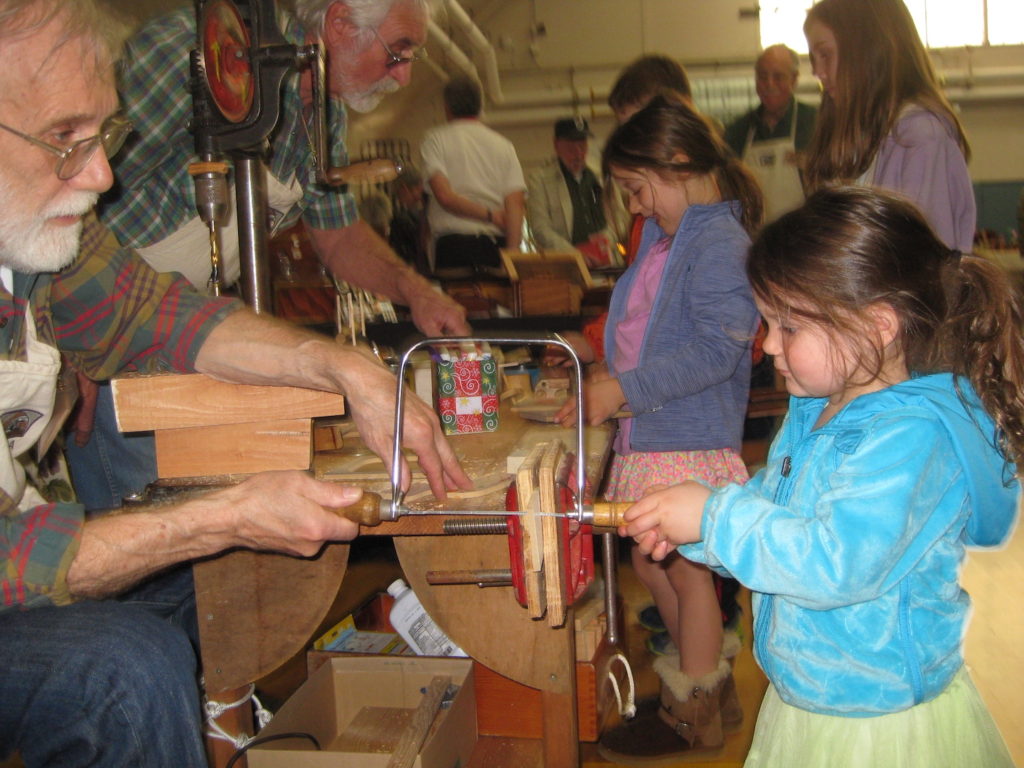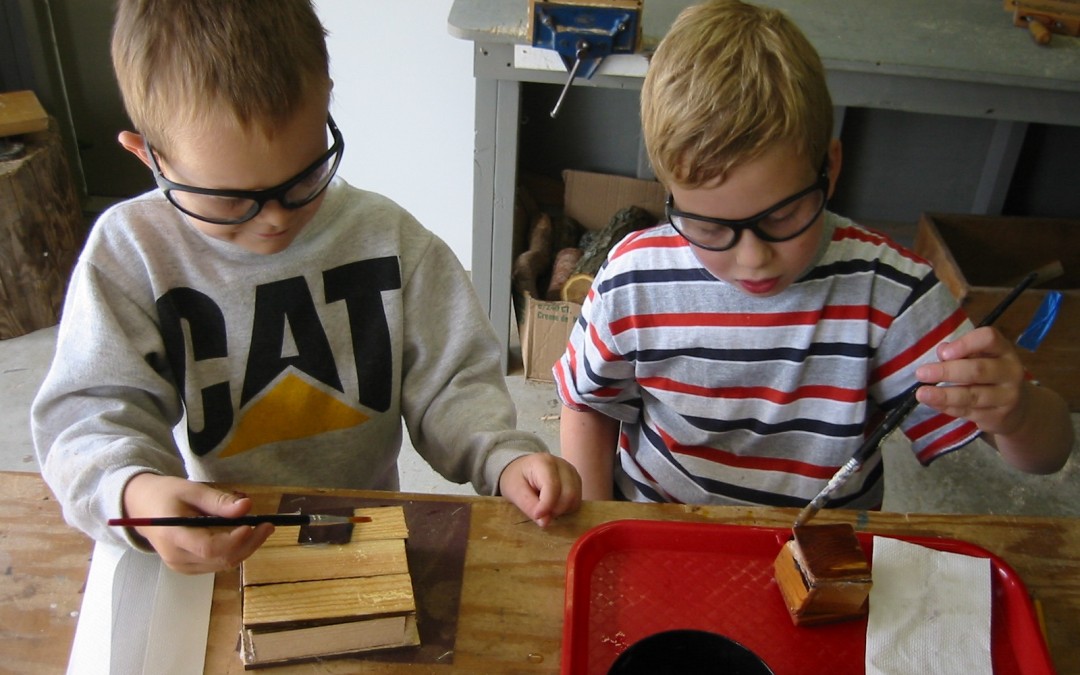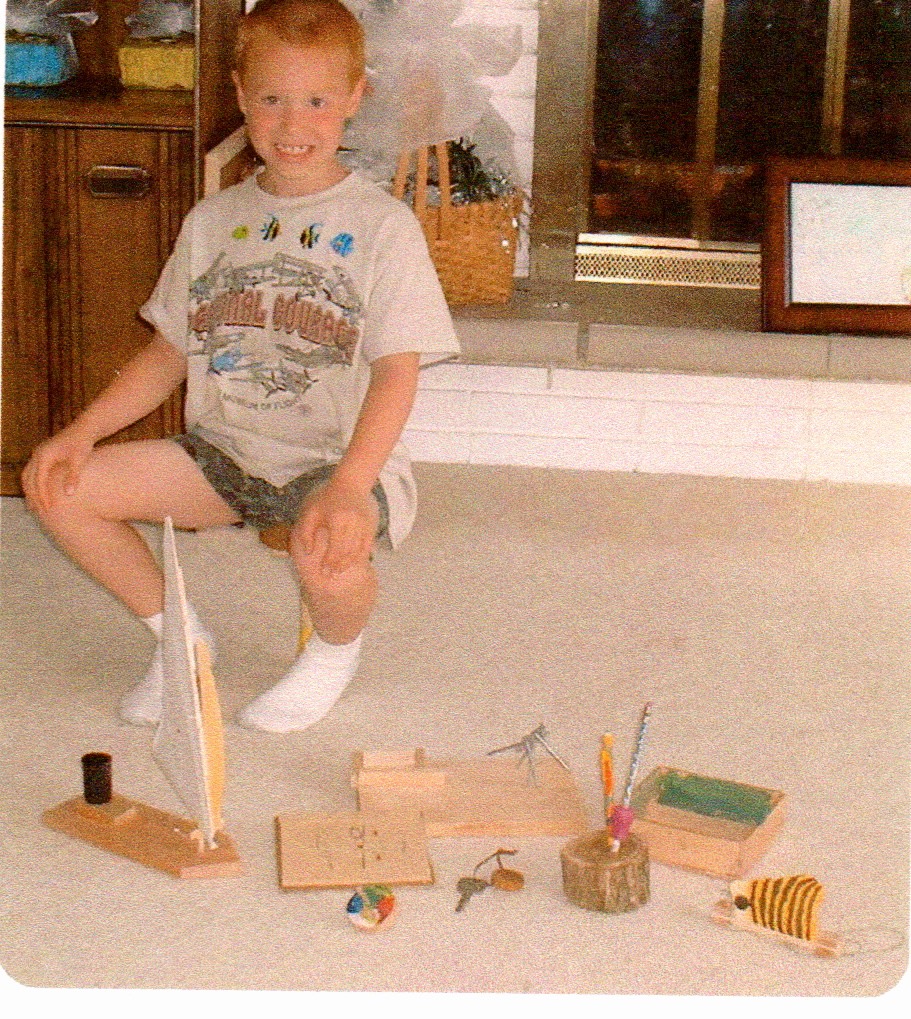Woodworking with Kids
My first class with children
The interest and excitement of my own kids about using tools, about building, and about woodworking taught me how competent kids could be and inspired me to do volunteer woodworking at my son’s school. My plan was for children to arrive with an idea of something to build and I would help them build it. From woodworking with my kids I knew enough to collect a workbench, kid-sized tools, and some scrap wood. Not surprisingly it was a bit more complicated.
Six kids arrived. Two had some idea about what to build and with a little help I was able to get them started. Some didn’t know where to begin and I didn’t know how to get them started. I tried to create, with words, an image of a project that would capture their interest by asking, “Would you like to build a boat, (candle holder, key ring)?” The answer came back something like, “maybe” or “let me think about it.” Other kids had an idea about what to build but no clue how to begin, so I had to figure out kid friendly construction details off the top of my head, communicate those details to the child in a way they could understand and show them how to use the tools. It wasn’t very successful. No one got hurt. I didn’t get mad or upset and make anyone hate woodworking, but the class was confusing for the kids and hectic for me. And not much was built. I went home to evaluate.
I had expected too much. Perhaps I made unconscious and unfair comparisons with my own children who had been around tools since birth. I had assumed kids could use a vice. They couldn’t. I assumed they knew enough to keep their fingers away from the saw teeth. They didn’t. Later I asked and none of the kids had ever used any tools before. How could they be expected to know what to do?

This is the puzzle project. I cut out thin plywood blanks backed with cardboard. I stacked them up and cut out 8 at a time on the bandsaw. I left the sanding for the kids. Kids draw a picture on the blank then cut it out with a coping saw.
I needed to review the way I used tools to see if I could break down actions I did without thinking, into steps kids could understand. I started with a safety demonstration: how to carry a saw, how to put a piece of wood in the vice, and how to use a saw. This was a step in the right direction and gave kids enough background to begin using tools without being injured. I became intrigued by the details of how to use tools at a beginning level. Over time, I refined this introductory demonstration and developed short lessons for each tool.

I put two handles on a coping saw which made it easier to help kids get to the point where they could do it themselves.
I was also expecting children who had never picked up a tool to be able to figure out what they wanted to make when the idea of making anything was foreign. I decided to take a boat and a pencil holder my son had built to the second class to see if this would help the children visualize a project. When I showed the boat and pencil holder, the kids reacted with excitement and enthusiasm. Everyone wanted to build both a boat and a candle holder. The class was still hectic, but it was amazing to me that a few tool lessons and a couple of projects could change the class tone from hectic and lost to interested and excited. Everyone went home with a project. The kids’ enthusiasm was contagious and I went home and to think up more projects.
I had so much fun I approached the local Park Department with the idea of a summer shop class for children. Even though I didn’t have much teaching experience, none actually, they were enthusiastic. I, however, was more than a little unsure about how things would go. Could I duplicate the playful atmosphere that prevailed at home with my own boys? Would other kids respond? Could I keep them from hurting themselves? Would they be interested in the projects I had created?
I need not have worried. That first year, half of the projects I developed were too complicated, but the other half worked surprisingly well. The children responded much like my own. They appreciated real tools and engaging projects. They worked hard to be safe. The kids got a taste of the magic of building and I got a taste of the magic of kids. It was the most meaningful, fun, and interesting woodworking I’d ever done.

